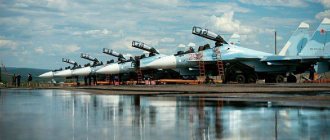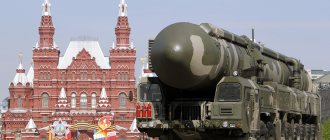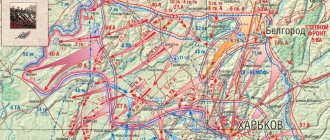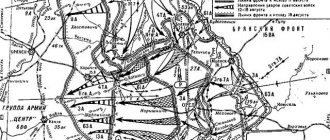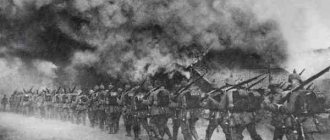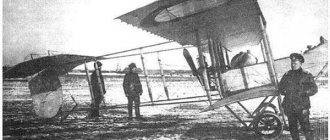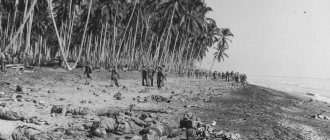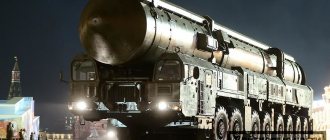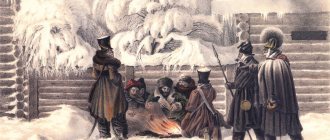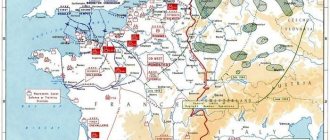Motorized rifle troops are units belonging to the ground forces. This is the basis of ground units. Equipment, maneuverability and weapons allow the MSV to conduct battles under any conditions. Motorized rifle companies and brigades are capable of holding the defense for a long time; they are difficult to stop when attacking. Units take part in landings and oncoming battles.
Technical equipment allows units to make throws over long distances and cross water barriers. The brigade formation is equipped with tank units, anti-aircraft guns and artillery. This significantly increases the combat effectiveness of units and increases their firepower. MRF employees have their own professional holiday - August 19 - Motorized Rifle Troops Day. On this day, military personnel of the units will be pleased to receive insignia and medals of the Russian MSV, which can be purchased on the website.
A little about the first “motorized rifles”
Sagittarius is the first regular type of troops on land. Sudden raids by the Tatars created the need to have a permanent, combat-ready army. In cooperation with the Yamskaya (postal and signal) and guard (constantly monitoring the borders) services, the archers were a kind of rapid response group. The raids were no longer unexpected, and the small detachments of the Horde did not cause severe destruction.
But historically, the archers are most likely a prototype of the internal troops rather than motorized rifle troops. They rarely went beyond the borders. This is due to the fact that all of them were engaged in agriculture in their free time. Long-term care devastated their families.
For the first time they used small arms (hence the name “strelets”, i.e. “shooter”) - squeaks. Of course, their effectiveness left much to be desired. This is all due to long reload times and constant misfires. However, this weapon perfectly fulfilled its role during the historical event - standing on the Ugra River. Let us recall that the Russian and Horde armies were on opposite banks opposite each other for a long time. Ordinary arrows did not reach the archers, but volleys from arquebuses caused damage to the Horde. Of course, the enemy did not have many losses, but the very fact of the unrequited use of weapons went down in history.
Thus, the ground forces rightly celebrate October 1 as the day of the creation of the first regular foot troops. But what is the problem then? Why do the military personnel themselves think that Motorized Rifle Troops Day in Russia should be celebrated at a different time?
Congratulations
For those to whom the army infantry has been and will be forever, To those who quickly crawl through the swamps, Their mud and sands will never stop.
We will compose a song of glory in congratulations, Happy holiday, our dear defender, And may you have enough strength and patience in battle, And may you not be abandoned by fate.
You keep peace and give us peace, You stand in defense of all of Russia, And your character is strong and masculine, It will not submit to troubles and the elements.
For this on a holiday and on another day, hour. We always say thank you. Because the infantry will never leave us. And the army will be firm and united.
Motorized riflemen don't have their own holiday?
The problem is that October 1 is a holiday celebrated by all types of ground forces. In addition to motorized rifle, these include artillery, reconnaissance, tank, engineering, signal troops, etc. All of the listed branches have their own professional day in addition to October 1. For example, tank crews celebrate their professional holiday on September 8, and artillerymen celebrate their professional holiday on November 19. Why is there no Day of Russian Motorized Rifle Forces? Many people consider this state of affairs unfair.
On what date can the Russian Motorized Rifle Forces Day holiday be introduced?
Some politicians want to set a professional holiday for motorized rifle troops on August 19. This initiative has long been supported by the soldiers themselves. Some have been celebrating it on August 19 for many years. But why was this particular date chosen? Let's take a closer look.
On this day in 1914, the First Automobile Machine Gun Company of the Russian Empire began to form, on the basis of which the First Armored Division was later formed.
Russia was the first in the world to create a separate division of armored vehicles. Later, the tactics of individual mechanized units and armored forces began to be used (more than 20 years later) during the Second World War.
Let us remember that motorized rifles today are not just infantry in the understanding of most people. The troops are equipped with modern infantry fighting vehicles that are capable of destroying heavy tanks and covering the offensive with firepower, as well as mobile transfer of soldiers from one strategic direction to another in off-road conditions.
It is with the creation of the First Machine Gun Company that we can talk not just about a new infantry unit, but about other troops - motorized rifle troops.
Armored cars with machine guns, which delivered soldiers to the battlefield and covered their tactical actions, became the prototype of infantry fighting vehicles.
Of course, in Soviet times it was difficult to imagine that the day of a professional army holiday would be chosen based on the history of the overthrown “damned” imperial regime. Even the Soviet Army Day on February 23 is most likely far-fetched, since no special heroic victories or events occurred on this day.
Therefore, congratulations on the Day of the Russian Motorized Rifle Forces should rightly be heard on August 19th. But despite this, today the holiday is officially celebrated on October 1.
Who's celebrating?
It is clear that the main combat unit of this type of troops is a combat transport vehicle or a vehicle with mechanical traction, which is equipped with infantry. The prototype of the MSV was the dragoons, which carried out the main combat operations both on horseback and on foot.
The first “engines” entered the army during the Anglo-Boer paramilitary conflict. But the machines began to be widely used only during the First World War. At first they were adapted for transporting soldiers, and, starting in 1916, they became powerful field guns, since the tank was invented. The riflemen were delivered directly to the battlefield both using trucks and using a transport tank, called an armored personnel carrier.
In 1918, in October, all infantry military units existing at that time, as well as units, received the name “rifle”, and since then this designation has been forever associated with the infantry.
The young Army of the Soviets is taking a general direction toward motorization. And already in 1939, a new formation appeared in the army - a motorized division. Even the years of war were not able to change the set course, and by its end almost all existing rifle divisions were equipped with means of movement and actually slept as motorized divisions. American armored personnel carriers and Studebaker trucks appeared in the army.
The formation of its own defense industry allowed the Union to completely solve the problem of army mechanization by 1957. However, the troops were renamed motorized rifle only in 1958. Thus, ordinary rifle infantrymen turned into formidable, invincible warriors, capable of solving the most unimaginable combat tasks.
Today, the MRF includes the motorized rifle units themselves, but also other troops. Units of tankers and artillerymen, rocket and anti-aircraft gunners, as well as special units today belong to motorized rifles.
They are equipped with both small arms and modern universal missile systems, which increases the firepower of the troops by an order of magnitude. Tanks and artillery, infantry fighting vehicles, as well as armored personnel carriers are aimed at destroying ground, moving and air targets.
And all officers, soldiers, cadets who serve or are preparing to serve in these armed formations are waiting for the Day of the Russian Motorized Rifle Forces - the date of 2016, as always, is unchanged and is closely connected with the history of the development and formation of the Motorized Rifle and Ground Forces.
MV today
Today, motorized rifle brigades include various types of troops, which form a single combat brigade capable of conducting autonomous combat operations for a long time.
These are tank, engineering, reconnaissance troops, artillery, communications, and logistics units.
They are equipped not only with conventional small arms (machine guns and machine guns), but also with modern missile systems, tanks, infantry fighting vehicles and many other types of weapons.
Troops are capable of covering any distance under any conditions. The latest technology, for example, BMP-2 and BMP-3, are capable of crossing even water obstacles on the move.
History of formation
Motorized rifle units were formed as a separate branch of the military in the USSR in 1957. It is interesting that no other army in the world had such equipment of the armed forces. The Soviet Union was the first to use BMP (infantry fighting vehicle) and armored personnel carriers to move infantrymen. A similar innovation was later applied in other world powers. In addition, the Soviet Union was the first to use armored personnel carriers and equipment capable of overcoming water barriers to transport infantry. The units were equipped with means of protection against the effects of weapons of mass destruction.
Despite the fact that the term “motorized rifle” units was first used in 1957, the history of the appearance of this military unit dates back to World War I. At that moment, gasoline-powered cars existed, which began to be used in the army to transport manpower. These were trucks on which machine guns were mounted. The first “machine gun company” appeared in 1914.
In the future, infantry units will continue to be mechanized. Thus, in 1918, rifle units equipped with prototypes of modern armored personnel carriers appeared in the Red Army. The Russian MSV is a universal force. They are distinguished by their ability to fight in all weather conditions, regardless of the time of day. Impassable terrain is not a problem for them. Units can independently and, most importantly, successfully conduct long-term combat operations with a large gap from the main military formations.
The main advantages of motorized rifle troops
The main advantages of MV include:
- High mobility. For example, units can perform a maneuver with a sharp strike, and then maintain a long-term defense even in conditions of encirclement.
- Technical equipment. Modern small arms, infantry fighting vehicles, armored personnel carriers, reconnaissance vehicles, anti-tank, anti-aircraft systems.
What to gift?
What to give to a motorized rifleman? Yes, it's very simple! You can give a T-shirt, flask, scarf or mug that says Golden Company, Motorized Rifle Troops, or order a song on the radio about a motorized rifleman.
You can also give a miniature motorcycle made of chocolate or a figurine of a motorized rifleman.
A GPS navigator would be an excellent gift so that a motorized rifleman can navigate the terrain well. After all, life directly depends on this skill.
Current state
The Ground Forces of the Russian Armed Forces are the most numerous branch of the Russian Armed Forces. Designed for combat operations primarily on land. The RF Armed Forces include motorized rifle and tank troops, missile troops and artillery, air defense troops, special troops, etc.
In 2013, the Press Service and Information Directorate of the Ministry of Defense of the Russian Federation reported that the full staff strength of the ground forces was determined at 300 thousand people.
In 2015, the Commander-in-Chief of the Army, Colonel General Oleg Salyukov, said in an interview with the Krasnaya Zvezda newspaper that the actual number of privates and sergeants in the troops at that time exceeded 183.4 thousand people, with 48% of them (about 88 thousand) people) - served under a contract. According to Oleg Salyukov, by 2021 the share of contract workers is planned to increase to 81%.
Structure
Organizationally, the Army has 11 armies in four military districts.
Western Military District, Western Military District:
- 6th Red Banner Combined Arms Army (headquarters in St. Petersburg);
- 1st Guards Tank Red Banner Army (Odintsovo, Moscow region);
- 20th Guards Red Banner Combined Arms Army (Voronezh).
Southern Military District, Southern Military District:
- 49th Combined Arms Army (Stavropol);
- 58th Combined Arms Army (Vladikavkaz).
Central Military District, Central Military District:
- 2nd Guards Combined Arms Red Banner Army (Samara);
- 41st Red Banner Combined Arms Army (Novosibirsk).
Eastern Military District, Eastern Military District:
- 5th Red Banner Combined Arms Army (Ussuriysk);
- 29th Combined Arms Army (Chita);
- 35th Red Banner Combined Arms Army (Belogorsk);
- 36th Combined Arms Army (Ulan-Ude).
In addition, a new combined arms army is currently being formed in the Southern Military District, the core of which should be the new 150th motorized rifle division. Presumably, the army headquarters will be located in Rostov-on-Don.
Interesting Facts
Motorized Rifle Troops Coins
- Under Prince Ivan III of Moscow, about a thousand arquebuses were made. This was the name of Russian firearms that resembled muskets. They are considered the first example of firearms of the Russian troops.
- The prototype of motorized rifles is considered to be foot dragoons, who moved on horseback, but fought dismounted.
- After the defeat in the Crimean War in 1856, Alexander II introduced general conscription and also carried out a number of military reforms aimed at modernizing the technical component of the combat potential of the infantry of the Russian army. The emperor also established an updated personnel training system and created such types of troops as engineering, aeronautics and railways.
- On December 1, 2022, the Bank of Russia issued three silver coins “Motorized Rifle Troops” with a face value of 1 ruble. They depict the emblem of the Ground Forces of the RF Armed Forces; a Red Army soldier against the backdrop of the Spasskaya Tower and an armored vehicle BA-27; a soldier of a motorized rifle brigade and a T-15 infantry fighting vehicle.
- The motto of the Russian motorized rifle troops is “Mobility and maneuverability”, depicted on the MSV flag.
War Lycans
The day before, the press service of the Central Military District reported that a conscript soldier from the same unit in the Sverdlovsk region got lost, deviating from his patrol route. He was found dead, electrocuted by a power pole he had climbed onto to look around.
Savvy
This was in the second half of the 80s; small businesses in the form of cooperatives were allowed in the country. The era of video stores and the first cable television networks has arrived.
Imagine what it was like for soldiers in the army in those days: in civilian life there were so many new temptations and all of them passed over those in tarpaulin boots.
The lucky few who managed to get out on furlough no longer walked the streets trying to meet girls, but went straight to the video store, where they watched movies all the time.
Just don’t think that there were no televisions in the soldiers’ barracks. There were, and all of them were colored, but the soldiers’ “favorite” program was the “Time” program.
Everyone watched it every day, and at the command of the orderly in the company. On Sundays, if there were no sporting events, I still managed to watch “Serving the Soviet Union” and “Morning Mail”.
Near the territory of the unit there was an officer’s town or DOS (House of Officers).
They didn’t bother with space for a video store, but immediately began to develop a full-fledged cable television network.
The main cable ran from the amplifier down the entrance and the signal passed through the UAR-6.1 subscriber distributors.
Cables were already stretching from UAR-6.1 to every room or apartment. That's the whole network. Officers in those years received very good salaries; there was nowhere to spend much, so everyone was happy to become cable television subscribers.
Officers quite often shared their impressions of the films they watched with the soldiers, causing inconsolable envy among the soldiers.
One fine evening, the soldiers sit down to watch their favorite program “Time”, but the TV only shows colorful “snow” - there is no signal. The people quickly realized that the hurricane wind, which raged all day, was to blame. He acted up on the roof; some television antennas were torn apart, and some were thrown onto the roof.
The foreman sends a couple of fighters to the roof, another fighter stands near the open window.
Through such a simple chain, commands were broadcast to the fighter, who, by rotating, adjusted the antenna to the maximum signal: “further!, further!, whoa!, back a little!, stop! etc"
Moreover, it was necessary to catch the maximum on both television channels, so the foreman continuously turned the channel switch.
During these switches, the entire barracks suddenly heard a voice that everyone knew. No, this is not Brezhnev and not the hunchback, this is cooler - Leonid Volodarsky. Let me remind you of his legendary voice:
We all knew his nasal voice very well; back then he translated pirated videos.
It was a cable TV signal.
Despite all the efforts of the guys that evening, except for the sound from the video and ripples on the screen, it was not possible to catch.
Nevertheless, the whole company was seething: what prospects were opening up! If the TV only picks up sound, it means the signal is weak. How to amplify it in a simple way - make an antenna precisely tuned to the 6th channel.
The next day, we got pieces of thick power cable from the electricians and made an antenna for receiving cable television.
Do not think that the soldiers then were entirely academics, capable of mentally calculating all the dimensions of the antenna elements.
The library had magazines “To Help the Radio Amateur”, where tables were printed with all sizes for any of the 12 channels.
Naturally, everything was done in secret from the officers.
During the day we changed the antenna on the roof, and after lights out we tuned it to maximum signal. The signal was unstable and constantly jumped from color to black and white. This did not upset the soldiers much - they watched videos for FREE, which even in civilian life was available to few people..
During the evening, 3-4 films were broadcast on the cable network, but the soldiers only had time to watch the last couple of films. Moreover, the very last film, which started after midnight, was with “strawberry”.
As you know, everything is never enough for a person and he wants more and better. So the soldiers were looking for an opportunity to improve the signal quality.
The best antenna turned out to be a “triple square” antenna, made of a copper tube with good coordination with the cable.
Everyone was taught conspiracy from school, using the examples of the first revolutionaries and partisans.
In order not to fall under the watchful eye of the unit duty officer or inspection officers, careful measures were taken. The TV was turned around so that the light from the screen did not fall on the windows. While watching videos, the orderly was placed on the landing of the barracks entrance: the front door slammed or steps were heard - immediately the sound of “atas!” was heard.
Until the officer reaches the entrance to the barracks and the TV is already turned off and everyone is serenely snoring in bed like babies.
If it was possible to hide this trick from the officers, it was not possible to hide it from the neighboring soldiers. Gradually, antennas made for the 6th television channel appeared in all barracks.
As you know, all good things come to an end. This is what happened with this “nirvana”.
In order to further improve the signal quality, they decided to change the cable going to the antenna: one of the soldiers said that they saw a silver-plated cable in the cable channels. Moreover, no one was surprised by this - the entire technical territory of the unit was “strewn” with antennas for working with space satellites.
Without hesitation, the soldiers cut out the required piece of cable. As it turned out, it was a working cable and the loss was immediately discovered. The culprits were found quickly and quickly.
A commission of officers “bulldozed” across the roofs of the barracks, removing and destroying all the soldiers’ “special equipment.”
The exits to the roof were padlocked and sealed.
For a long time afterwards, the fighters recalled this happy time with quiet sadness and a melancholy sigh.
How did the soldiers manage to catch a cable television signal with a regular antenna?
The sixth television channel is broadcast at a frequency of 175 MHz.
This is a fairly high frequency. When transmitting a radio signal in a cable network, the rule applies: the higher the frequency of the radio signal, the more critical it is to the quality of connections. Any inhomogeneity in the connection (due to poor-quality soldering) or poor grounding of the shielding braid of the cable or cable amplifier leads to signal radiation into the air.
In essence, such a place becomes a small “television center”. The disadvantage of such a “television center” is its short range: the attenuation of radio waves when propagating over the air is equal to the square of the distance, so this signal can only be caught within a couple of hundred meters.
Movies
"Brotherhood (2018)"
1988, the Afghan war entered its final stage. Russian soldiers face one last mission - returning home. The task is complicated by the fact that the military's path lies through lands controlled by the Mujahideen.
Crossing the pass falls on the shoulders of the resourceful lieutenant Vasily Zheleznyakov, nicknamed “The Greek”. When the soldiers reach territory controlled by a brutal terrorist, the Greek takes desperate measures - he surrenders to the criminal as a hostage.
The lieutenant did this so that his colleagues could go the rest of the way unhindered, but he is well aware that any mistake could cost him and the others their lives...
"Breakthrough (2006)"
The war near the borders of Afghanistan has acquired incredibly frightening proportions, drawing other countries into the conflict. Russia also sent its best troops to counter terrorists threatening civilians. Companies of paratroopers, famous for their courage and strength, instantly found themselves face to face with thousands of enemy troops.
You cannot retreat, an order is an order, and many will have to pay for its execution with their own lives. But is everyone ready for such sacrifices?
"They Fought for Their Country (1975)"
July 1942, the height of the Great Patriotic War. The Soviet rifle regiment is on the outskirts of Stalingrad, but it is becoming increasingly difficult to fight: the regiment has lost a large number of soldiers, the soldiers are bleeding, hungry and exhausted. Nevertheless, they continue to fight for their homeland: having received the task of occupying and holding high ground in the steppe, they dig trenches and repel enemy tank attacks.
At the center of the events is the soldier Pyotr Lopakhin, who gives the impression of a cheerful and cheerful fellow, although in fact he takes everything very seriously and is deeply worried about the fate of his native country and for his people.
